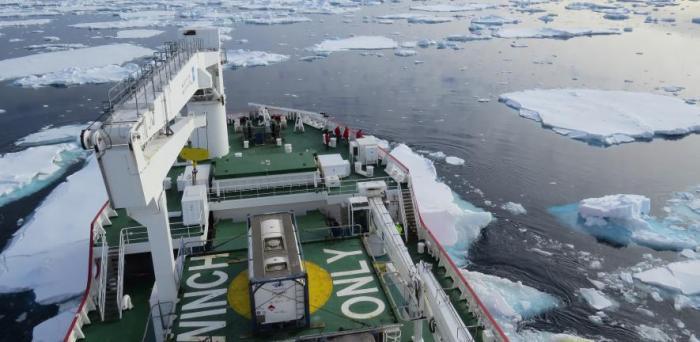The study, led by the Scott Polar Research Institute at the University of Cambridge, used patterns of delicate wave-like ridges on the Antarctic seafloor to calculate how quickly the ice retreated roughly 12,000 years ago during regional deglaciation.
The ridges were produced where the ice sheet began to float, and were caused by the ice squeezing the sediment on the seafloor as it moved up and down with the movement of the tides. The images of these landforms are at unprecedented sub-metre resolution and were acquired from an autonomous underwater vehicle (AUV) operating about 60 metres above the seabed. The results are reported in the journal Science.
While modern satellites are able to gather detailed information about the retreat and thinning rates of the ice around Antarctica, the data only goes back a few decades. Calculating the maximum speed at which an ice sheet can retreat, using sets of these seafloor ridges, reveals historic retreat rates that are almost ten times faster than the maximum observed rates of retreat today.
“By examining the past footprint of the ice sheet and looking at sets of ridges on the seafloor, we were able to obtain new evidence on maximum past ice retreat rates, which are very much faster than those observed in even the most sensitive parts of Antarctica today,” said lead author Professor Julian Dowdeswell, Director of the Scott Polar Research Institute.
The study was carried out as part of the Weddell Sea Expedition, which set out in early 2019 to undertake a science programme and to find Sir Ernest Shackleton’s doomed ship Endurance. Although sea ice conditions at the time prevented the team from acquiring imagery of the legendary wreck, they were able to continue with their scientific work, including mapping of the seafloor close to the Larsen Ice Shelf, east of the Antarctic Peninsula.
Using drones, satellites and AUVs, the researchers were able to study ice conditions in the Weddell Sea in unprecedented detail.
Image: View from Agulhas II
Credit: Julian Dowdeswell
Reproduced courtesy of the University of Cambridge
